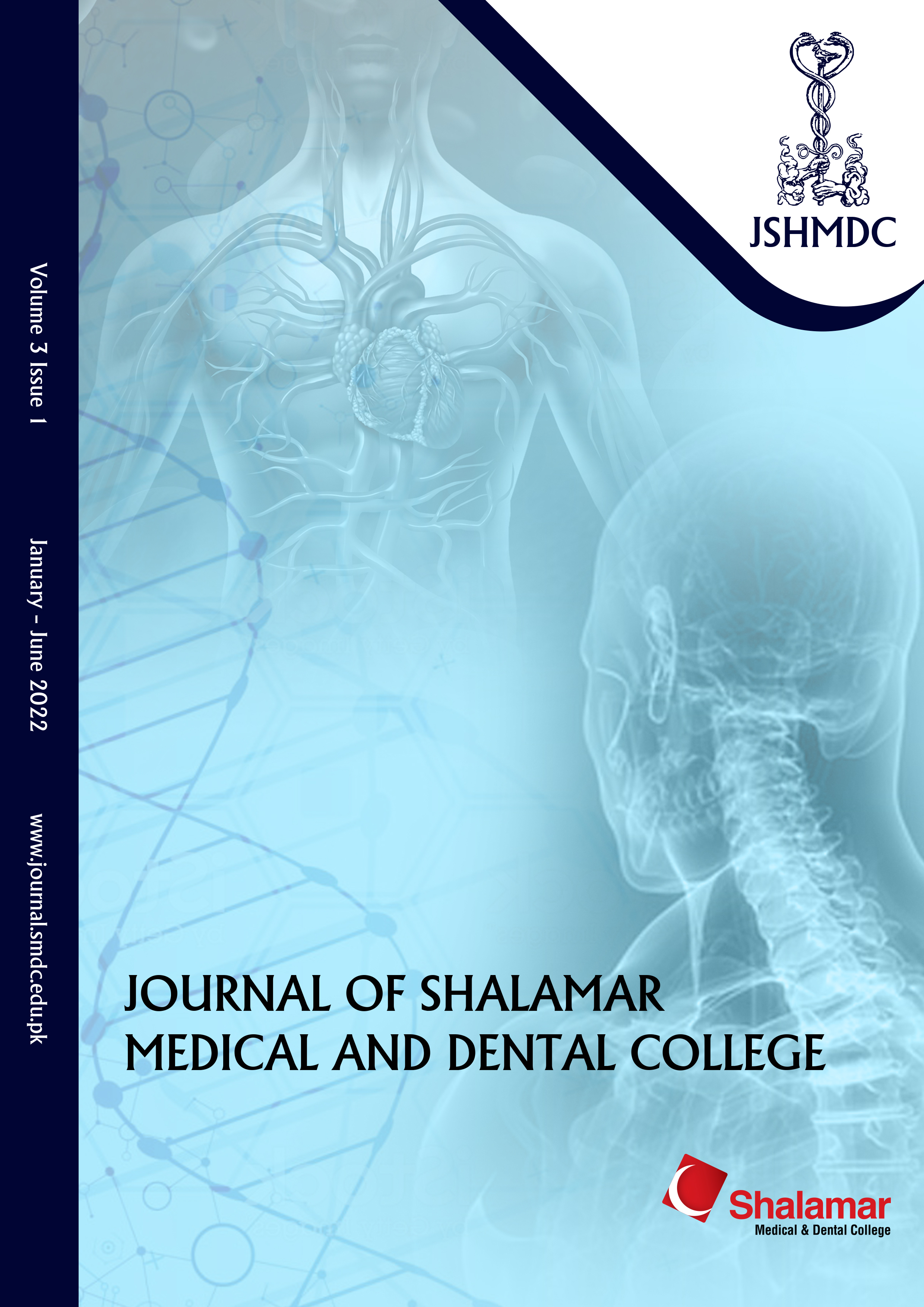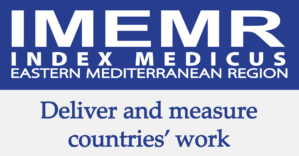Anatomy & Surgery: A love hate relationship
DOI:
https://doi.org/10.53685/jshmdc.v3i1.103Abstract
Introduction: Anatomy is still taught in medical schools as a basis for studying pathophysiology and surgery. Lack of integration of basic and clinical disciplines reduced teaching hours, and poor teaching methodologies have a significant effect on anatomical knowledge and medical education standards.
Objectives: To evaluate the perspectives of undergraduate students of MBBS, fresh MBBS graduates, teaching faculty of anatomy, and consultants on the importance and reconstruction of the anatomy curriculum.
Materials & Methods: A total of 600 subjects participated in this cross-sectional study. A feedback form was used to collect data regarding time allocation, clinical relevance, integration, and clear viewpoints in basic histology, embryology, and gross anatomy. The form included free text, binomial, and 5-point Likert scale replies.
Results: Analysis of the results revealed that all stakeholders universally preferred integrated anatomy teaching throughout the academic years of medical school instead of demanding block during the early two years. According to the study, students experienced inadequacies in their anatomical knowledge when they started their clinical training.
Conclusion: This study contributes further to the ongoing discussions in anatomical sciences education by revealing that new doctors believe that anatomical instruction should be prioritized regardless of their career goals.
References
Peeler J, Bergen H, Bulow A. Musculoskeletal anatomy education: evaluating the influence of different teaching and learning activities on medical students’ perception and academic performance. Annals of Anatomy-Anatomischer Anzeiger. 2018; 219: 44-50. doi:10.1016/j.aanat. 2018.05.004 DOI: https://doi.org/10.1016/j.aanat.2018.05.004
Philippe S, Souchet AD, Lameras P, Petridis P, Caporal J, Coldeboeuf G, et al. Multimodal teaching, learning, and training in virtual reality: a review and case study. Virtual Reality & Intelligent Hardware. 2020; 2(5): 421-442. doi: 10.1016/j.vrih.2020.07.008 DOI: https://doi.org/10.1016/j.vrih.2020.07.008
Ahmad K, Khaleeq T, Hanif U, Ahmad N. Addressing the failures of undergraduate anatomy education: Dissecting the issue and innovating a solution. Ann Med Surg (Lond). 2020; 61: 81-84. doi:10.1016/j.amsu.2020.1 2.0 24. DOI: https://doi.org/10.1016/j.amsu.2020.12.024
Akeel MA. Exploring students’ understanding of structured practical anatomy. J Taibah Univ Med Sci. 2021; 16(3): 318-327.doi: 10.1016/j.jtumed. 2020.12.00 DOI: https://doi.org/10.1016/j.jtumed.2020.12.006
Singh V, Kharb P. A paradigm shift from teaching to learning gross anatomy: a meta-analysis of implications for instructional methods. J. Anat. Soc. India. 2013; 62(1): 84-89. doi:10.1016/S0003-2778(13)80019-6 DOI: https://doi.org/10.1016/S0003-2778(13)80019-6
Huynh N, Burgess A, Wing L, Mellis C. Anatomy by Whole Body Dissection as an Elective: Student Outcomes. J Surg Educ. 2021; 78(2): 492-501. doi: 10.1016/j.jsurg.2020.07.041 DOI: https://doi.org/10.1016/j.jsurg.2020.07.041
Cottam WW. Adequacy of medical school gross anatomy education as perceived by certain postgraduate residency programs and anatomy course directors. Clin Anat. 1999; 12(1): 55-65. doi:10.1002/(SICI)10982353(1999)12:1<55:AID -CA8>3.0.CO;2-O. DOI: https://doi.org/10.1002/(SICI)1098-2353(1999)12:1<55::AID-CA8>3.0.CO;2-O
Estai M, Bunt S. Best teaching practices in anatomy education: A critical review. Ann Anat. 2016; 208: 151-157.doi:10.1016/j.aanat.2016.02. 010. DOI: https://doi.org/10.1016/j.aanat.2016.02.010
Zhang JF, Zilundu PL, Zhou L, Guo GQ. Supplementary Regional Anatomy teaching by surgeons enhances medical students' mastery of anatomical knowledge and positively impacts their choice of future career. J Surg Educ. 2020;77(5): 1113-1120.doi:10.1016/j.jsurg.2020. 03.016. DOI: https://doi.org/10.1016/j.jsurg.2020.03.016
Moxham BJ, Hennon H, Lignier B, Plaisant O. An assessment of the anatomical knowledge of laypersons and their attitudes towards the clinical importance of gross anatomy in medicine. Ann Anat. 2016; 208: 194-203. doi:10.1016/j.aanat. 2016. 06.001. DOI: https://doi.org/10.1016/j.aanat.2016.06.001
Moxham BJ, Shaw H, Crowson R, Plaisant O. The future of clinical anatomy. Eur J Anat. 2011; 15(1): 29-46.
O’Keeffe GW, Davy S, Barry DS. Radiologist’s views on anatomical knowledge amongst junior doctors and the teaching of anatomy in medical curricula.Ann Anat. 2019; 223: 70-76. doi:10. 1016/ j.aa nat.2019.01.011 DOI: https://doi.org/10.1016/j.aanat.2019.01.011
Triepels CPR, Koppes DM, Van Kuijk SM, Popeijus HE, Lamers WH, Van Gorp T, et al. Medical students’ perspective on training in anatomy. Ann Anat. 2018; 217: 60-65.doi:10.1016/j.aanat.2018.0 1.006. DOI: https://doi.org/10.1016/j.aanat.2018.01.006
AlSaggaf S, Ali SS, Ayuob NN, Eldeek BS, El-Haggagy A. A model of horizontal and vertical integration of teaching on the cadaveric heart. Ann Anat. 2010; 192(6): 373-377. doi: 10.1016/ j.aanat.2010.06.005. DOI: https://doi.org/10.1016/j.aanat.2010.06.005
Asakuma M, Komeda K, Yamamoto M, Shimizu T, Iida R, Taniguchi K, Inoue Y, Hirokawa F, Hayashi M, Okuda J, Kondo Y. A concealed “Natural Orifice”: umbilicus anatomy for minimally invasive surgery. Surgical Innovation. 2019; 26(1): 46-49. DOI: https://doi.org/10.1177/1553350618797619
Clarke R, George D. Medical students’ perspective–the role of technology in Anatomy teaching: striking the right balance. Adv Med Educ Pract. 2020; 11: 333-337. doi: 10.2147/ AMEP.S240150. DOI: https://doi.org/10.2147/AMEP.S257161
Berkhout JJ, Helmich E, Teunissen PW, van der Vleuten CP, Jaarsma AD. Context matters when striving to promote active and lifelong learning in medical education. Med Educ. 2018; 52(1): 34-44. doi: 10.1111/medu.13463. DOI: https://doi.org/10.1111/medu.13463
Bernstein DA. Does active learning work? A good question, but not the right one. Scholarship of Teaching and Learning in Psychology. 2018; 4(4): 290-293. doi:10.1037/stl0000124 DOI: https://doi.org/10.1037/stl0000124
Khan H, Asif M, Kumari D, Jiskani AR, Kirmani F, Tariq AB, et al. Retention of Anatomy knowledge: during clerkship. EC Clinical and Experimental Anatomy. 2020; 3(3): 1-5.
Singh R, Shane Tubbs R, Gupta K, Singh M, Jones DG, Kumar R. Is the decline of human anatomy hazardous to medical education /profession?—A review. Surg Radiol Anat. 2015; 37(10): 1257-1265. doi: 10.1007/s0 027 6-015-1507-7 DOI: https://doi.org/10.1007/s00276-015-1507-7
Downloads
Published
How to Cite
Issue
Section
License
Copyright (c) 2022 Haadia Ali, Sophia Shahid, Javeria Noor, Bahadur Baloch

This work is licensed under a Creative Commons Attribution-NonCommercial 4.0 International License.
You are free to:
- Share — copy and redistribute the material in any medium or format
- Adapt — remix, transform, and build upon the material
- The licensor cannot revoke these freedoms as long as you follow the license terms.
Under the following terms:
-
Attribution — You must give appropriate credit, provide a link to the license, and indicate if changes were made. You may do so in any reasonable manner, but not in any way that suggests the licensor endorses you or your use.
-
Non Commercial — You may not use the material for commercial purposes.
-
No additional restrictions — You may not apply legal terms or technological measures that legally restrict others from doing anything the license permits.




















